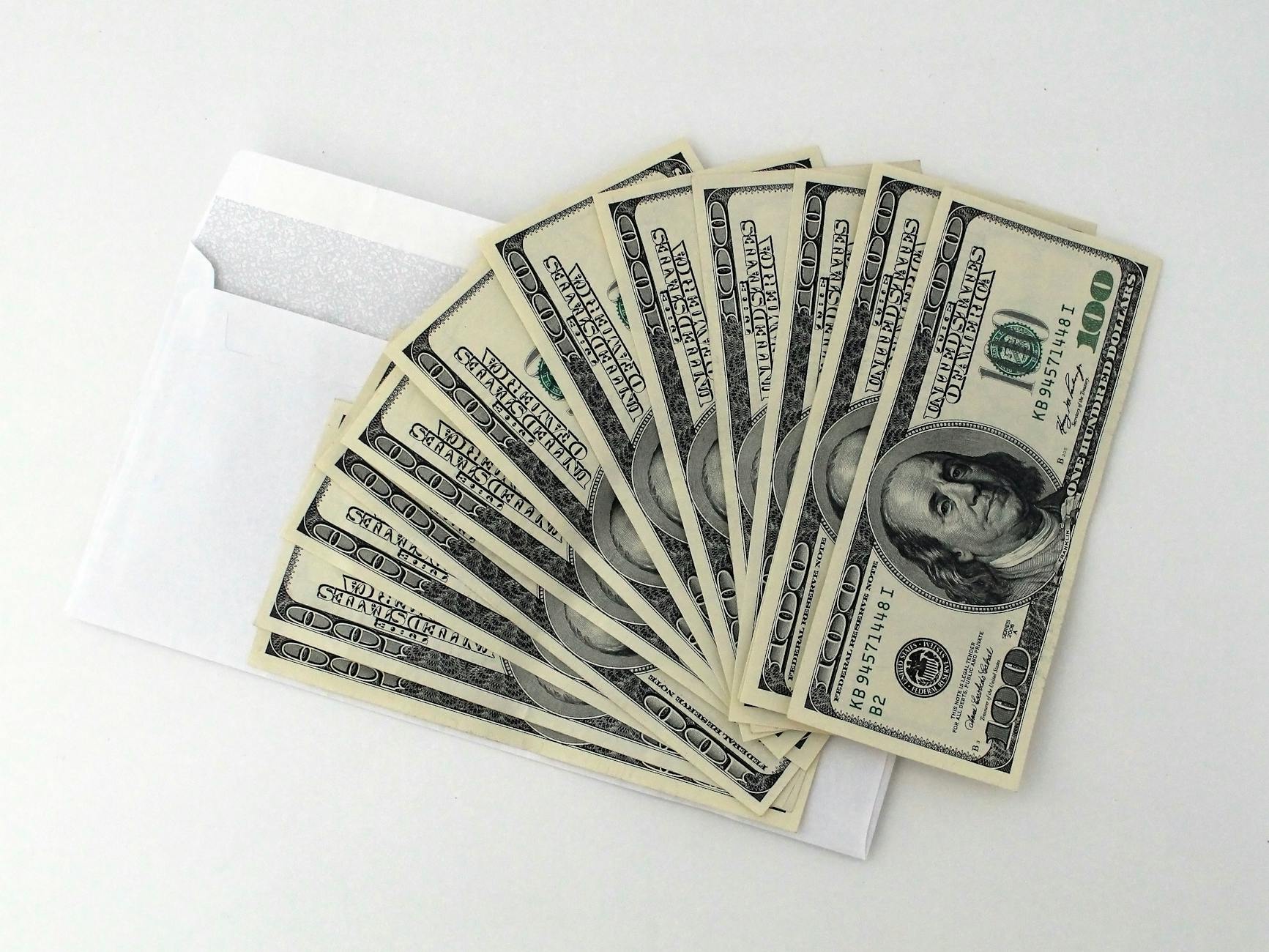When to Refinance Your Loan: Key Signs and Steps to Take
When to Refinance Your Loan: Key Signs and Steps to Take
Deciding when to refinance your loan can feel overwhelming. But understanding the right time to make this financial move can save you money and simplify your payments.
Generally, you should consider refinancing if you can secure a lower interest rate, but there are other factors at play too. Maybe your credit score has improved, or your current loan terms no longer fit your financial needs.
This post will cover key signs that refinancing makes sense and the steps you should take. We’ll also discuss the potential benefits and drawbacks of refinancing, so you can make a well-informed decision. Whether you’re new to loans or have some experience, this guide will help you navigate your options effectively.
Understanding Loan Refinancing
Refinancing your loan can be a smart financial decision. It’s a way to adjust your loan terms and potentially lower your monthly payments. But what exactly does refinancing involve? Let's break it down simply.
What is Refinancing?
Refinancing is the process of replacing an existing loan with a new one, often to secure better terms. This can apply to various loans, including mortgages, auto loans, or personal loans. When you refinance, you essentially pay off your old loan and replace it with a new one, typically with a different interest rate or repayment term.
For instance, if you have a mortgage with a high interest rate, you might refinance to take advantage of lower rates. This change can result in lower monthly payments and interest savings over the life of the loan. It's helpful to think of refinancing as refreshing your loan, much like switching to a newer model of a car that offers better fuel efficiency.
For a deeper understanding, check out this informative link on what refinancing is: Investopedia - Refinance: What It Is, How It Works, Types, and Example.
How Does Refinancing Work?
The refinancing process consists of several straightforward steps:
-
Assess Your Current Loan: Start by reviewing your existing loan terms, interest rate, and payment history. Understand your financial goals.
-
Shop for Rates: Compare offers from multiple lenders. Look for lower interest rates and favorable terms to ensure you are getting the best deal.
-
Choose a Lender: Once you've found a competitive rate, select a lender and complete your application. This will involve providing necessary documentation like income proof and credit history.
-
Lock In Your Rate: If you’re satisfied with the terms, you can lock in your interest rate, which guarantees that rate for a specific period until the loan closes.
-
Undergo Underwriting: The lender will verify your creditworthiness during this stage. This involves assessing your financial status through credit checks and other evaluations.
-
Close the Loan: Once approved, you’ll sign the new loan agreement, and the existing loan will be paid off. Your new payments will then start according to the terms of your refinance loan.
It’s common to wonder how long this whole process takes or if it’s the right time to refinance. Feel free to check this useful link for more details: Bankrate - Mortgage Refinancing: What Is It And How Does It Work?.
 Photo by Antoni Shkraba
Photo by Antoni Shkraba
Benefits of Refinancing Your Loan
Refinancing offers a range of advantages that can significantly enhance your financial situation. Whether you're looking to save money on your monthly payments or tap into the equity in your home, refinancing might be the right move. Here are three key benefits you should consider.
Lowering Your Interest Rate
One of the most compelling reasons to refinance is to secure a lower interest rate. Interest rates fluctuate, often influenced by economic factors and Fed policy. If current rates are significantly lower than what you’re paying, it might be wise to refinance. Suppose you locked in a high rate during your initial mortgage term. In that case, refinancing can lead to notable monthly savings.
Consider this scenario: If your current rate is 5% and the new rate is 3%, your monthly payment could decrease dramatically. Even a 1% reduction can lead to hundreds saved each year, making it easier for you to manage your budget. For more detailed information on how interest rates affect refinancing, refer to this link: 5 Benefits of Refinancing Your Home Loan.
Shortening Loan Terms
Refinancing doesn't only mean securing a lower rate; it can also change the duration of your loan. Choosing a shorter loan term, like moving from a 30-year to a 15-year mortgage, may increase your monthly payments but can decrease total interest paid over the life of the loan. In essence, you get to own your home free and clear much sooner.
This approach allows you to build equity faster and potentially save a substantial amount on interest costs. Imagine your financial freedom as you reach your full ownership sooner. If you want to explore more details about the pros of shortening your loan term, check out: Pros and Cons of Refinancing.
Accessing Home Equity
Refinancing can also serve as a means to access the equity you’ve built in your home. A cash-out refinance lets you take some of that equity and convert it to cash for various needs, be it home improvements, debt consolidation, or other investments.
Home equity is like a piggy bank that grows as you pay down your mortgage. You can use that money for significant expenses or projects, effectively leveraging your home’s value to better your financial situation. Think of it as unlocking funds that can work for you. For detailed insights on cash-out refinance options, consider reading this link: Top 5 reasons to refinance and the pros and cons of each.

Photo by Pixabay
Key Indicators for Considering Refinancing
Several key factors can signal that now may be the right time for you to consider refinancing your loan. Understanding these indicators will assist you in making a smart financial move.
Interest Rate Trends
Interest rates are like the weather—constantly changing. A slight dip in rates can profoundly affect your financial health. Currently, rates have fluctuated, and keeping an eye on these trends is important. If you're paying a higher rate than the prevailing market rate, refinancing can save you significant money on monthly payments.
For instance, if you're locked into a 5% interest rate, but the current rate drops to 3%, it’s an excellent opportunity to refinance. You can gain substantial savings over the lifetime of the loan, even if rates rise and fall over time. Every 1% decrease in interest can translate into hundreds of dollars saved each year. For today's refinance rate trends, take a look at Compare today's refinance rates.

Photo by Craig Adderley
Improved Credit Score
Your credit score plays a significant role in refinancing. As you work towards improving your credit score, you may find yourself qualifying for better refinancing terms. Lenders typically offer lower interest rates to borrowers with higher credit scores, as they are perceived as less risky.
For example, if you’ve increased your score from 620 to 740, refinancing could yield a much better rate than what you currently have. That kind of improvement can translate into substantial monthly savings. Just keep in mind that while refinancing might lower your interest, it could temporarily impact your credit score due to the associated hard inquiry. If you want to explore more on how your credit score affects your refinancing options, check this link: How Does Refinancing Affect Your Credit Score?.
Major Life Changes
Life is full of changes—marriage, moving to a new city, or starting a new job can all prompt a reevaluation of your financial situations. These major life events might lead you to reconsider your loan terms. For instance, if you’ve just received a promotion and a salary increase, you may want to refinance to access better terms or take advantage of greater financial flexibility.
Alternatively, if your family is growing, you might prefer consolidating debts or accessing equity to fund a larger home or education costs. In such cases, refinancing could provide a pathway to achieving your goals. To learn more about how significant life events can influence your refinancing strategies, read about A Refinance can be a big help during major life events..
Costs and Considerations of Refinancing
When thinking about refinancing, it's essential to weigh the costs and considerations carefully. While lower monthly payments or interest rates can be enticing, there are often fees and long-term implications associated with restructuring your loan. Understanding these factors enables you to make informed decisions.
Closing Costs and Fees
Refinancing your loan involves certain costs that can impact your overall savings and should not be overlooked. Here’s a breakdown of typical expenses you might encounter during the refinancing process:
- Loan Origination Fee: Generally 1% to 1.5% of the loan amount, this fee covers the lender's costs for processing your application.
- Application Fee: This is typically between $75 and $300.
- Appraisal Fee: Fees can vary widely based on the property but would usually run anywhere from $300 to $700.
- Credit Report Fee: A nominal fee (around $30 to $50) that ensures your credit history is checked.
- Recording Fees: Vary by location but can range from $25 to $250 depending on where you live.
Overall, you could be looking at 2% to 6% of your total loan amount in closing costs, which is significant when combined. Therefore, it’s vital to check whether the savings from a lower interest rate outweigh the costs. For a detailed understanding of refinancing costs, check out this resource: Understanding the costs of refinancing.
Potential for Longer Debt Commitment
Refinancing isn't merely about lowering your payments; it may also extend the overall length of your debt. Most homeowners opt to refinance to stretch their repayment timeline, which can reduce monthly payments. However, extended terms mean you'll be applying interest over a longer period, potentially leading to more substantial total interest payments.
For example, switching from a 15-year to a 30-year mortgage can reduce your monthly obligations but practically doubles the time you'll be in debt. If you've almost paid off your loan, starting a new, longer term may not be wise since it delays full ownership.
Understanding your long-term financial goals is critical here. Are you preparing for a future property purchase, or are you happy paying off debt over an extended period? It’s important to approach refinancing with clarity on how this impacts your financial future. If you want to dive deeper into the costs of refinancing, you can visit How Much Does It Cost To Refinance A Mortgage?.

Photo by Mikhail Nilov
When Not to Refinance
Navigating the decision to refinance your loan is crucial, and sometimes it makes sense to hold off on this move. Understanding the scenarios where refinancing may not be beneficial can save you unnecessary expenses and stress. Here are two significant conditions to consider.
High Closing Costs Relative to Savings
Refinancing comes with several fees. These can include loan origination fees, appraisal costs, and closing costs, typically amounting to 2-6% of your new loan amount. If your monthly savings from a lower interest rate are minimal compared to these costs, it might not be worth it to refinance.
Consider a situation where refinancing could lower your monthly payment by $100. However, if the fees associated with the refinance total $4,000, you'd need to remain in your home for about 3-4 years just to break even. If you plan to sell your home or pay off the loan sooner, those savings vanish. A detailed exploration of costs can be found here: Understanding the costs of refinancing.
Short-Term Loan Commitment
You might be nearing the end of a loan term. If financing a new loan extends your payment obligation, it is wise to assess whether the long-term costs outweigh immediate benefits. For example, switching from a remaining balance of a 10-year mortgage to a new 30-year term could significantly increase the interest paid over time.
If you’re just a few years away from paying off your loan, the potential benefit of refinancing might not be worth the extended commitment. Additionally, interest rates could change significantly, impacting any potential savings. For perspective on when not to refinance, consider reading: Top Reasons Not To Refinance Your Home.

Photo by Mikhail Nilov
Steps to Take Before Refinancing
Before jumping into refinancing your loan, taking some crucial steps is essential to ensure you're making a wise financial decision. Proper preparation can help you secure better terms and ultimately save money. Here are two key steps to focus on.
Evaluate Your Current Loan
Taking a good look at your existing loan is the first step in the refinancing process. Assess your current loan terms, including the interest rate, monthly payments, and any penalties for early repayment. Understanding the specifics of your loan can reveal whether switching to a new loan is beneficial.
Questions to ponder:
- What is your current interest rate, and how does it compare to today’s rates?
- Are there any fees or penalties associated with paying off your loan early?
- How long do you plan to stay in your home?
Additionally, tools like this Loan Balance Calculator can help clarify your current loan balance. Knowing your remaining balance and loan terms is critical before you move forward.

Photo by ShotPot
Shop for Rates and Terms
Comparing offers from various lenders can help ensure you find the best refinancing deal available. Just like shopping for the best deal, investing time in research can pay off significantly. Look at a range of options, focusing on interest rates and other loan terms.
Key considerations when shopping for rates:
- Interest rates: Look for the lowest possible rate while considering fixed vs. adjustable rates.
- Fees: Understand any associated costs, including origination fees or closing costs.
- Loan terms: Determine whether you prefer shorter terms to save on interest in the long run, or if you want to keep payments low with a longer term.
Utilizing resources like The mortgage refinance process in 6 steps: Timeline to close can help you understand the refinancing timeline and what to expect as you explore loan options.
Taking these initial steps will empower you to make a confident decision about refinancing.
Conclusion
As you consider refinancing your loan, it’s crucial to evaluate your specific circumstances. Refinancing can be an excellent option for reducing your monthly payments or obtaining a better interest rate, but it may not always be the ideal route for everyone.
Key Considerations Before Making a Decision
Understanding your loan's terms and current financial situation is paramount. Here are essential areas to reflect on:
-
Interest Rate Comparison: If current interest rates have dropped significantly since you initially took out your loan, refinancing could yield meaningful savings. For example, when rates fall from 5% to 3%, the resulting savings on monthly payments can be substantial. Explore more about when to refinance: When to Refinance Your Mortgage.
-
Future Plans: Consider how long you plan to stay in your home. If a refinance brings the monthly payment down, it may help until you decide to sell. However, if you are approaching the end of your loan term, refinancing can extend your debt commitment, potentially increasing overall interest payments. More insight on evaluating your refinance decision can be found in this article: When Should You Refinance?.

Photo by Jakub Zerdzicki
Assessing the Benefits vs. Costs
Before deciding to refinance, weigh the potential savings against closing costs and fees. If the reduction in monthly payments doesn’t significantly outweigh the costs of refinancing, it might be better to hold off until market conditions change. Check out this resource for a breakdown of refinancing pros and cons: Pros and Cons of Refinancing Your Home.
Ultimately, your best path is to assess these factors in light of your unique financial situation. Whether refinancing makes sense depends on a careful examination of interest rates, your financial goals, and how they align with your loan’s terms.


